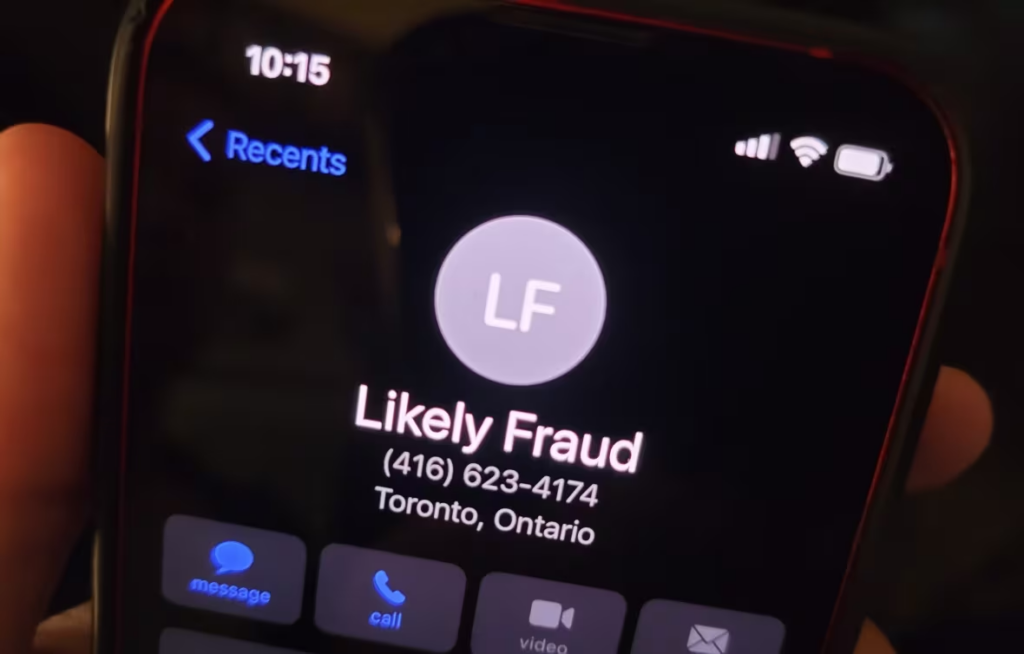Spam calls—also known as “scam calls”—are irritating. Most people know about scammers impersonating government authorities or Amazon personnel to steal your money.
“I’m still getting a lot of spam calls,” said Whitby, Ont., IT specialist Pradeep Selvaraj.
Scammers contact Salvaraj two to three times a week, typically at work. They claim to be from “CRA, RCMP, duct cleaning, Amazon, UPS shipping and the list goes on,” he claimed. “It’s very annoying.”
When the CRTC announced STIR/SHAKEN in late 2021, many hoped such calls would end. It helps carriers identify callers that use faked phone numbers to hide their identity.
STIR/SHAKEN was never intended to be a complete answer, and 18 months later, it still isn’t. Scam calls will continue for those reasons.

“To be honest, it’s a global problem,”
In November 2021, the CRTC mandated telecom providers use STIR/SHAKEN. “STIR/SHAKEN will undoubtedly reduce spoofing and help Canadians regain peace of mind when answering phone calls,” stated then-CRTC chair Ian Scott.
Technology isn’t perfect. Instead of blocking calls, it labels them “likely fraud” or “likely spam.” You decide to take up.
It only works on end-to-end calls on modernized phone networks that employ internet-based technology. Phone companies are updating to these systems. Thus, some callers receive notifications but not others.
As phone providers improve their systems, “STIR/SHAKEN will become more effective over time,” CRTC spokesman Valérie Lavallée stated in an email.
She could not disclose how many calls STIR/SHAKEN covers.
Bell claimed in an email that STIR/SHAKEN can check “increasing constantly over time” calls on its network.
Rogers claimed the technology covers most calls. Telus ignored.

Local number purchase
Fraudsters learn about any crime-fighting technologies.
“These scammers are financially motivated and driven,” said Toronto IT and cybersecurity specialist Ritesh Kotak. “They do invest in research and development and figuring out ways to circumvent the system.”
Scammers can circumvent STIR/SHAKEN by buying and calling Canadian phone numbers from anywhere.
“Getting a local phone number is easy. “Apps exist,” he remarked. Purchased numbers don’t verify location. Credit cards are sufficient.”
- New caller ID law combats spam and fake calls
- CRTC urges telcos to battle scams.
Garneau said the CRTC can’t prohibit fraudsters from calling from legal phone lines, but some Canadian telcos are fighting back with their own technology.
Bell’s AI algorithm can recognize several robocalls from one number.
“They’re blocking real fraudulent activity that way,” Garneau added.
Telus and Rogers informed CBC News they had spam call-blocking tools for clients.
Money loss
Phone scams still happen despite prevention efforts.
Phone scams cost 1,973 victims $20.6 million in the first three months of this year, according to the Canadian Anti-Fraud Centre. Since not all victims report to the Centre, the true amount is likely substantially higher.
Kotak said education and new technologies can stop this sort of scam.
“Scammers are going to be there as long as we’re making phone calls,” he stated. “So it’s very important that we educate the population on what is a scam call, [and] ensure it gets reported.”
Selvaraj agrees and recently uploaded a fraud call to YouTube. The scammer claimed that Amazon had charged Selvaraj $1,534. He confronted the fraudster, who hung up.
Selvaraj thinks the video would alert Tamil immigrants.
“It’s important to spread this awareness,” he stated.
10 years in Canada. I sometimes have trouble telling if a call is legitimate.”

